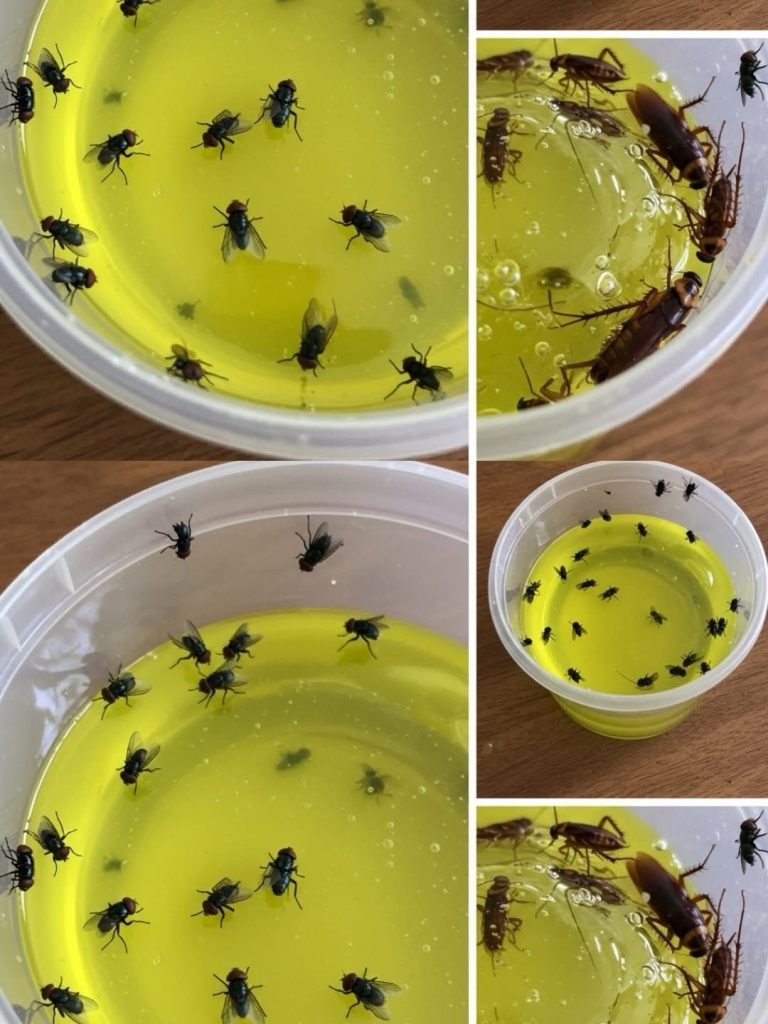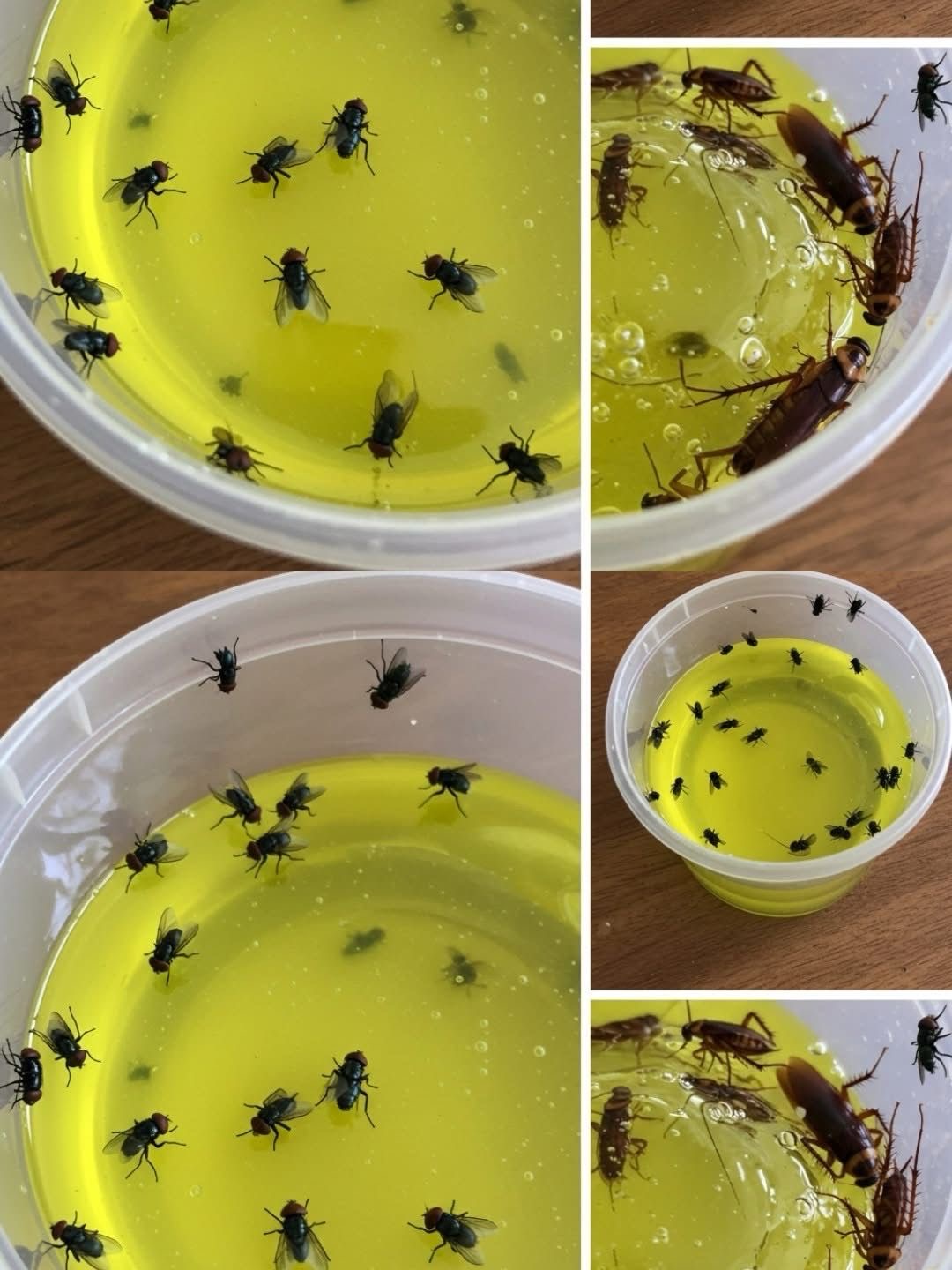Homemade Insect Trap A Natural Solution for Pest Control

Introduction
Flies, cockroaches, and other pests can be a major nuisance in homes, especially in warm and humid climates. While chemical insecticides are effective, they can be harmful to humans and pets. A homemade insect trap is an eco-friendly, cost-effective solution that helps keep your home free of unwanted bugs without resorting to harsh chemicals. This article will guide you through making an effective homemade insect trap using simple ingredients commonly found at home.
History of DIY Insect Traps
For centuries, people have used various natural methods to control insect populations. Before the invention of modern insecticides, early civilizations relied on fermented liquids, sugar-based baits, and sticky substances to capture flies and other pests. The concept of using a liquid trap stems from traditional methods where insects are attracted to the scent of food, fall into the liquid, and become trapped.
With the rise of natural pest control, many households today prefer homemade traps that use natural ingredients like vinegar, sugar, or oil, which effectively attract and eliminate insects without harmful chemicals.
Ingredients for a Homemade Insect Trap
Here’s what you’ll need to create an effective insect trap:
Basic Ingredients:
- 1 cup apple cider vinegar (or white vinegar) – Attracts flies with its strong smell.
- 1/2 cup dish soap – Breaks surface tension, causing insects to sink.
- 1 cup sugar water – Attracts cockroaches and flies.
- A few drops of lemon juice or essential oils (optional) – Enhances attraction for some insects.
Alternative Ingredients for a Stronger Trap:
- Overripe fruit pieces (like banana or mango) – Intensifies the scent.
- Baking soda and vinegar – Creates a reaction that kills insects.
- Beer or wine – Yeast fermentation attracts flies.
Instructions: How to Make the Insect Trap
Method 1: The Vinegar and Soap Trap (For Flies and Cockroaches)
- Prepare the Liquid Mix – In a plastic container or bowl, mix apple cider vinegar (or white vinegar), sugar water, and a few drops of dish soap.
- Add a Bait Element – If dealing with cockroaches, place a small piece of overripe fruit into the mixture.
- Place the Trap – Set the container in areas where flies or roaches are commonly found, like the kitchen or near trash cans.
- Monitor and Replace – Replace the solution every few days as it fills up with trapped insects.
Method 2: The Jar and Plastic Wrap Trap
- Prepare the Jar – Use a glass jar and fill it with sugar water, vinegar, and dish soap.
- Cover with Plastic Wrap – Secure a piece of plastic wrap over the opening and poke small holes.
- Trap the Insects – Insects enter the jar through the holes but struggle to escape.
- Dispose and Refresh – Empty the jar when full and prepare a fresh mixture.
Method 3: Sticky Paper Trap (For Cockroaches and Flies)
- Create Sticky Strips – Cut pieces of cardboard and coat them with honey, sugar syrup, or petroleum jelly.
- Place in Key Areas – Stick them near sinks, food storage, or areas where insects frequently gather.
- Check and Replace – When covered with insects, dispose of them and replace with fresh strips.
How These Traps Work
- Flies are attracted to the scent of fermenting liquids like vinegar or overripe fruit. Once they land in the mixture, the soap reduces the surface tension, causing them to sink and drown.
- Cockroaches seek sugary or starchy food and are drawn to the mixture. The sticky liquid prevents them from escaping.
- The sticky trap method works by physically trapping insects on a surface they cannot escape from.
Benefits of a Homemade Insect Trap
Eco-Friendly – No harmful chemicals or pesticides.
Cost-Effective – Made using household ingredients.
Safe for Humans and Pets – No toxic fumes or residues.
Easy to Make – Requires minimal effort and ingredients.
Highly Effective – Works well in kitchens, outdoor areas, and garbage disposal sites
Homemade insect traps offer several advantages over commercial pesticides and chemical-based solutions. Here’s why they’re a great choice for pest control:
1. Eco-Friendly and Non-Toxic
Unlike chemical sprays and insecticides that release harmful toxins into the air, homemade traps use natural ingredients like vinegar, sugar, and soap. This makes them a safe choice for homes with children, pets, and individuals sensitive to chemicals.
2. Cost-Effective
Most homemade traps use everyday kitchen ingredients like vinegar, sugar, and dish soap, eliminating the need for expensive store-bought solutions. You can create multiple traps for just a few cents.
3. Safe for Humans and Pets
Many commercial insecticides contain toxic substances that can pose health risks to pets and small children. Homemade traps use food-based ingredients, reducing the risk of accidental poisoning or exposure to harmful chemicals.
4. Highly Effective Against Flies and Cockroaches
Homemade traps work exceptionally well because they attract insects with scents they cannot resist. The combination of vinegar and sugar mimics the smell of rotting fruit, luring flies, while the sticky liquid prevents escape.
5. Easy to Make and Maintain
There’s no need for special equipment or expertise—just a few household ingredients, a container, and a little mixing. Plus, these traps require minimal upkeep and can be easily replaced when full.
6. Reduces the Need for Chemical Sprays
By using homemade traps, you decrease reliance on chemical sprays that can contribute to indoor air pollution and environmental contamination.
7. Works Indoors and Outdoors
Whether you need to keep flies out of your kitchen or prevent cockroaches from invading your patio, these traps can be placed anywhere—near garbage bins, in pantries, or outside dining areas.
8. Helps Control Infestations Naturally
By consistently using these traps, you can reduce the insect population over time, preventing larger infestations without using toxic substances.
9. Customizable for Different Pests
You can tweak the ingredients depending on the type of insect you want to target. For example:
- Flies are drawn to vinegar and sugar.
- Cockroaches prefer sugary or starchy baits.
- Mosquitoes are attracted to yeast and carbon dioxide.
10. No Strong Chemical Smells
Unlike bug sprays that leave behind a strong odor, these traps release mild, natural scents, making them a better choice for enclosed spaces like kitchens and bedrooms.
11. Environmentally Friendly Disposal
Once full, you can dispose of these traps without worrying about contaminating soil or water sources.
By making a simple switch to homemade insect traps, you’re opting for a healthier, safer, and more sustainable method of pest control. Would you like specific trap variations for different types of pests?
Precautions and Tips for Best Results
- Regularly clean and replace the traps to prevent bad odors and maintain effectiveness.
- Place traps strategically in areas where insects gather most frequently.
- Keep the area clean – Remove food waste and stagnant water sources to reduce insect attraction.
- Use different baits for different insects – Flies love vinegar and fruit, while cockroaches prefer sugar-based solutions.
Conclusion
Homemade insect traps are an excellent alternative to chemical pesticides, providing a safe and effective way to manage household pests. Whether dealing with flies, cockroaches, or other insects, these simple DIY solutions offer an affordable and natural way to keep your home pest-free. Try these traps today and enjoy a cleaner, bug-free environment!
